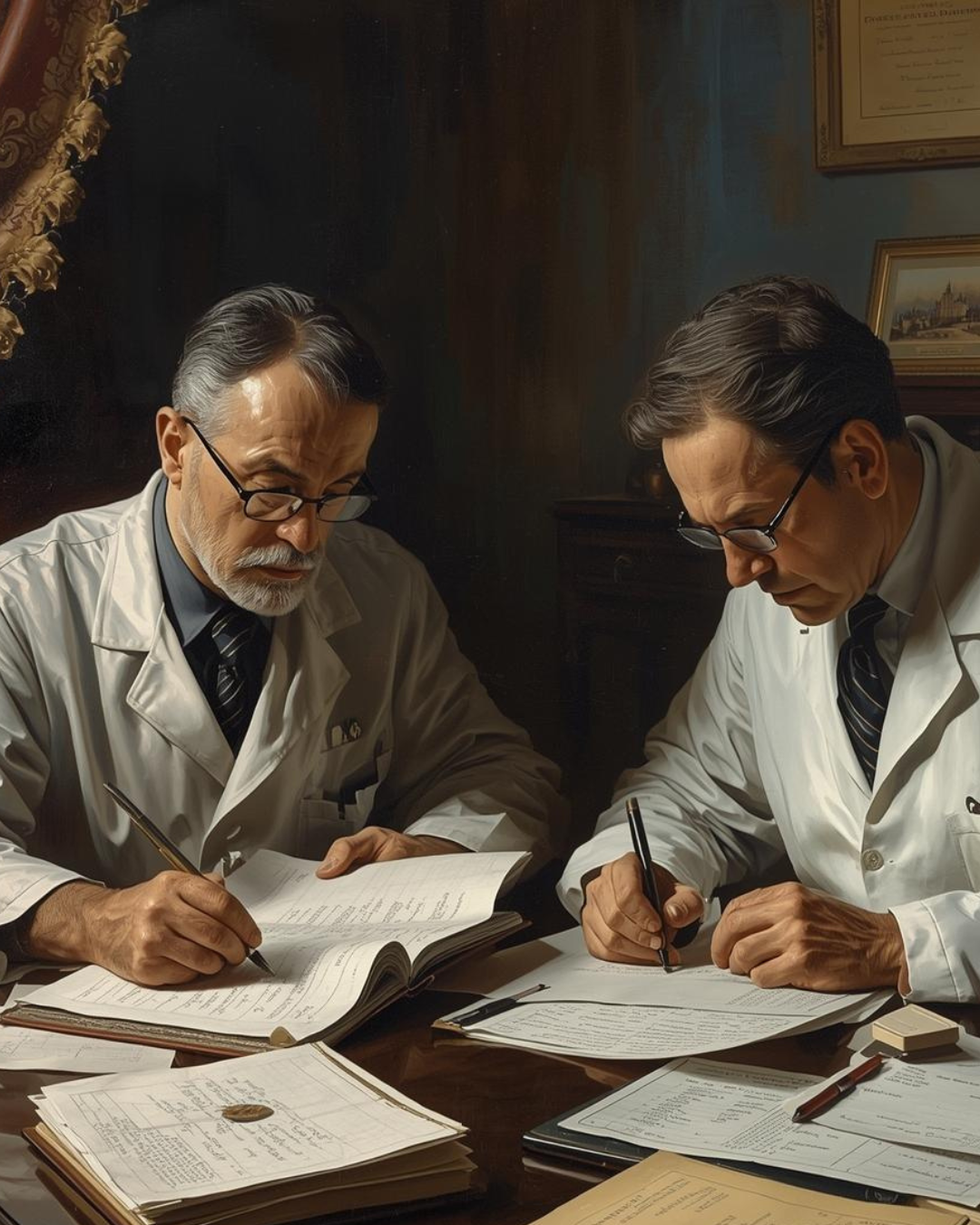From Voice to Chart: Comparing Freed AI with TransDyne’s Virtual Scribe Workflow

From Voice to Chart: Freed AI vs. TransDyne’s Virtual Scribe Workflow
As healthcare continues to evolve, physicians are under growing pressure to balance clinical care with mounting documentation demands. In this landscape, tools that streamline clinical note-taking are no longer optional—they’re essential. Two solutions leading this charge are Freed AI and the TransDyne virtual scribe, each offering a different approach to easing the burden of documentation.
Freed AI is part of a new wave of AI voice tools in healthcare that promises to speed up note creation through speech recognition and artificial intelligence. It’s designed to function as an AI medical scribe, enabling physicians to dictate and generate documentation faster than traditional typing.
On the other hand, the TransDyne virtual scribe takes a hybrid approach that blends intelligent automation with trained human scribes. Its complete virtual scribe workflow supports physicians before, during, and after the patient visit—offering a more hands-off, accurate, and fully integrated solution.
This blog breaks down both systems—from their technology to their real-world impact—helping you understand which model delivers the most effective EHR documentation support, saves time, and ultimately fits your clinical workflow best.
What is Freed AI?
Freed AI is one of the emerging AI voice tools in healthcare designed to help physicians reduce the time they spend on clinical documentation. At its core, Freed AI uses advanced speech recognition and natural language processing (NLP) to convert physician dictation into a structured clinical note. It positions itself as an AI medical scribe—eliminating the need for manual typing or traditional scribe assistance during patient encounters.
The typical virtual scribe workflow with Freed AI begins with the physician recording their voice using the Freed app. Once the dictation is complete, the platform generates a draft note using AI algorithms. Physicians must then carefully review, edit, and verify the accuracy of the note before copying and pasting it into the EHR system. This final step requires the provider to manually handle EHR documentation support, making it a semi-automated process.
While Freed AI significantly reduces the initial effort involved in transcription, it places a portion of the documentation burden back on the physician. Users must be vigilant about checking for AI hallucinations, misinterpretations of clinical language, or missed details that could affect coding or compliance. For busy practices, this editing requirement can offset some of the time savings Freed aims to deliver.
In contrast to TransDyne’s virtual scribe model—which combines AI voice tools in healthcare with trained human scribes—Freed relies almost entirely on automation. This makes it a leaner solution with lower overhead, but it may not be the best fit for complex cases, specialty practices, or providers who require more personalized documentation assistance.
Ultimately, Freed AI offers a step toward automation in clinical workflows, but it still requires active physician involvement to ensure documentation quality. Compared to the more hands-off, human-supported TransDyne virtual scribe approach, Freed may be better suited to physicians who are tech-savvy, have lower patient volumes, and are comfortable managing their own documentation flow.
What is TransDyne’s Virtual Scribe Workflow?
The TransDyne virtual scribe workflow represents a hybrid model that merges the power of AI voice tools in healthcare with the reliability of trained human scribes. Unlike tools like Freed AI, which rely solely on artificial intelligence to generate documentation, TransDyne offers a comprehensive virtual scribe workflow that handles the end-to-end clinical note creation process—before, during, and after the patient visit.
The process begins with pre-charting, where TransDyne prepares a partial note using prior patient data. This step alone reduces the physician’s need to sift through past records before the encounter. During the consultation, the physician records the audio of the visit using the TransDyne mobile app. From there, a powerful blend of AI-driven transcription and human scribe expertise extracts and structures the relevant information into a complete clinical note.
Unlike typical AI medical scribe systems, the TransDyne virtual scribe team doesn’t just transcribe; they validate. Each note is reviewed for accuracy, medical relevance, and consistency with provider preferences. The final documentation is then seamlessly integrated into the EHR system, eliminating the need for manual entry or copy-paste tasks—solving a major challenge in EHR documentation support.
This virtual scribe workflow is especially valuable for high-volume practices and specialty providers who need both accuracy and efficiency without adding to the physician’s workload. While Freed AI requires physicians to review and edit every note, TransDyne’s model removes that burden entirely.
The human component is what sets TransDyne apart. While AI voice tools in healthcare are rapidly improving, they can still misinterpret clinical language, miss context, or generate hallucinated content. TransDyne’s human-AI hybrid ensures notes are medically sound, compliant, and billing-ready.
In short, the TransDyne virtual scribe workflow offers a hands-free, reliable, and accurate documentation solution—one that reduces burnout, improves productivity, and delivers consistent EHR documentation support, making it a more complete alternative to fully automated solutions like Freed AI.
Key Workflow Comparison: Freed vs. TransDyne
When it comes to clinical documentation, both Freed AI and the TransDyne virtual scribe model aim to reduce the burden on physicians. However, their virtual scribe workflows are fundamentally different in how they handle the process—from note creation to EHR documentation support.
Freed AI operates as an AI medical scribe, relying exclusively on advanced speech recognition and natural language processing. Physicians dictate their notes using the Freed platform, which then auto-generates a draft. This draft must be reviewed, edited, and manually copied into the EHR by the provider. While this approach can reduce typing time, it still places a significant share of the documentation task on the physician. The reliance on AI voice tools in healthcare alone may lead to accuracy issues, missing context, or hallucinated clinical content.
On the other hand, the TransDyne virtual scribe system is built around a hybrid model that combines human expertise with intelligent automation. Before the encounter, TransDyne prepares partial notes through pre-charting. During the visit, physicians record the consultation audio. A team of trained human scribes, supported by AI, extracts relevant clinical data and creates structured, accurate notes. These notes are then directly inserted into the EHR—removing the need for any manual physician involvement in EHR documentation support.
Let’s break down the comparison:
Feature | Freed AI | TransDyne Virtual Scribe |
Input Method | Voice Dictation | Audio Recording |
Note Creation | Fully AI-Generated | AI + Human Scribe |
Physician Editing Required | Yes | No |
EHR Integration | Manual Copy-Paste | Seamless |
Pre-Charting Support | No | Yes |
While Freed AI fits solo or low-volume providers comfortable with tech, the TransDyne virtual scribe model is ideal for practices seeking a hands-free, reliable, and scalable documentation solution. For practices looking beyond basic AI voice tools in healthcare, TransDyne offers a complete, efficient, and clinically sound virtual scribe workflow.
Physician Experience: Which One Saves More Time?
Time is one of the most valuable—and limited—resources for physicians. As documentation demands continue to rise, choosing the right solution can significantly affect a provider’s daily schedule, after-hours workload, and overall job satisfaction. When comparing Freed AI with the TransDyne virtual scribe, the difference in physician experience becomes clear.
Freed AI positions itself as an AI medical scribe, built to reduce time spent on documentation. Physicians speak into the system, and the tool uses AI voice tools in healthcare to generate a draft clinical note. While this eliminates the need for typing, it still requires the physician to carefully review, edit, and finalize the note. In many cases, providers must also manually perform EHR documentation support tasks, such as copying and pasting the note into the electronic record system. This means Freed AI reduces some administrative burden—but it doesn’t eliminate it.
In contrast, the TransDyne virtual scribe delivers a more hands-free experience. Its virtual scribe workflow begins before the patient visit, with pre-charting based on historical data. After the visit, TransDyne’s combination of AI-powered technology and trained human scribes creates a complete and accurate note. The finalized documentation is automatically integrated into the EHR—freeing physicians from charting, editing, or any manual EHR work.
The impact on time savings is significant. Physicians using the TransDyne virtual scribe typically avoid hours of after-clinic charting and can see more patients without compromising care. The seamless EHR documentation support means providers can end their day when their last patient leaves—not when their last chart is done.
While Freed AI helps reduce time on the front end, it shifts part of the burden to post-visit tasks. The TransDyne model, on the other hand, delivers a truly end-to-end solution that gives physicians their time back—without sacrificing documentation quality or compliance.
Choosing the Right Scribe Solution for Your Practice
As healthcare technology continues to evolve, physicians are faced with critical decisions about how to manage documentation without sacrificing patient care or personal well-being. When comparing Freed AI and the TransDyne virtual scribe, it’s clear that both offer valuable approaches—but serve very different clinical needs.
Freed AI, as an AI medical scribe, brings automation into the hands of tech-savvy physicians. It utilizes advanced AI voice tools in healthcare to transcribe dictated notes into structured text. For those comfortable with technology and willing to review, edit, and manage EHR documentation support themselves, Freed AI offers a low-touch entry point into digital scribing.
However, that convenience comes with limitations. The virtual scribe workflow with Freed requires active physician oversight, manual copy-pasting into the EHR, and a careful eye to catch inaccuracies, hallucinations, or missing clinical context. This can reduce the time savings Freed AI promises—especially for physicians with high patient volumes or complex cases.
On the other hand, the TransDyne virtual scribe offers a more comprehensive solution. By combining automation with trained human scribes, TransDyne provides a full-service, end-to-end virtual scribe workflow. From pre-charting to final EHR documentation support, physicians can rely on accurate, specialty-specific notes that are entered directly into their EHR systems—no edits, no manual transfer, and no lost time.
For practices aiming to reduce documentation burden, improve clinical accuracy, and reclaim physician time, the TransDyne virtual scribe is a more robust choice. It enhances both the provider and patient experience by minimizing screen time and maximizing face-to-face care.
Ultimately, the decision between Freed AI and TransDyne depends on your workflow, preferences, and clinical demands. If you’re looking for true time savings and seamless integration, the hybrid approach behind the TransDyne virtual scribe may be exactly what your practice needs in this digital era of healthcare.
Latest blog & articles
Learn about new product features, the latest in technology, solutions, and updates.
Medical Record Review Services: Process, Turnaround Time, and Use Cases Explained
Medical record review December 28, 2025 Medical Record Review Services: Process, Turnaround Time,...
Medical Scribe Services: Cost, ROI, and Productivity Gains for Physicians in 2026
Medical Scribe December 17, 2025 Medical Scribe Services: Cost, ROI, and Productivity Gains...
How to Create a Litigation-Ready Medical Timeline: Step-by-Step Guide
Medical record review December 11, 2025 How to Create a Litigation-Ready Medical Timeline:...



